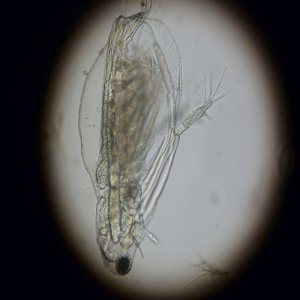Geographical, environmental, and biotic constraints define the spatial distribution of Diaphanosoma species (Cladocera)

Accepted: 19 January 2023
SUPPLEMENTARY PDF: 38
HTML: 37
All claims expressed in this article are solely those of the authors and do not necessarily represent those of their affiliated organizations, or those of the publisher, the editors and the reviewers. Any product that may be evaluated in this article or claim that may be made by its manufacturer is not guaranteed or endorsed by the publisher.
Authors
Species distribution is a combination of ecological, historical, stochastic, and evolutionary mechanisms, and is a process that has been severely impacted by anthropogenic activities. Freshwater zooplankton is adequate to assess that combination because it groups cosmopolitan and endemic species. We hypothesized that the spatial distribution of Diaphanosoma species is defined by a complex interaction between factors such as spatial limitation, limitation of environmental conditions, and ecological conditions. We georeferenced the occurrence of Diaphanosoma in Brazil to study the potential distribution of the species, preference of ecoregions, environmental features associated with Diaphanosoma, and their co-occurring patterns. Five species of Diaphanosoma are widely distributed in Brazil. D. spinulosum and D. birgei were widely distributed while D. fluviatile and D. polyspina had a more restricted distribution. The occurrences of Diaphanosoma species were shown to have an association with factors such as the total concentrations of nitrogen and phosphorus, pH and, temperature, except in the case of the D. brevireme. Our results show that geographic, environmental, and biotic filters can drive the spatial distribution of species of the genus Diaphanosoma. Therefore, the distribution and spatial occurrence of these species depend on dispersal capacity and spatial restrictions, suitability of the abiotic environment, and ecological interactions.
How to Cite

This work is licensed under a Creative Commons Attribution-NonCommercial 4.0 International License.
PAGEPress has chosen to apply the Creative Commons Attribution NonCommercial 4.0 International License (CC BY-NC 4.0) to all manuscripts to be published.


 https://doi.org/10.4081/aiol.2023.10848
https://doi.org/10.4081/aiol.2023.10848



